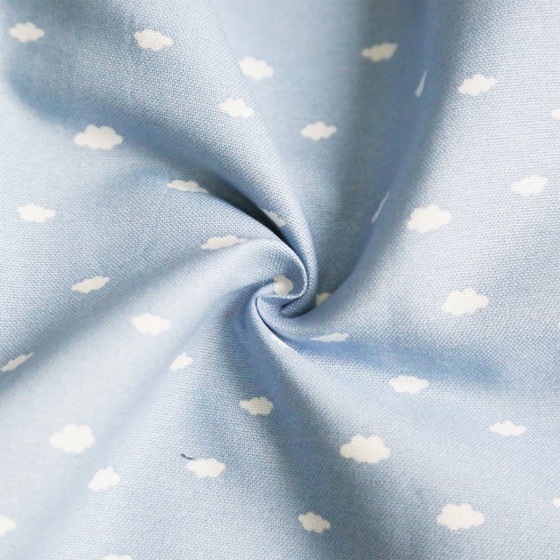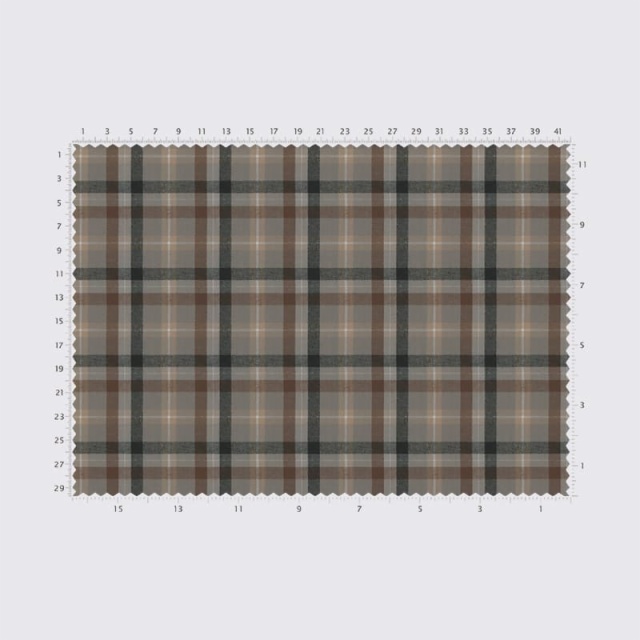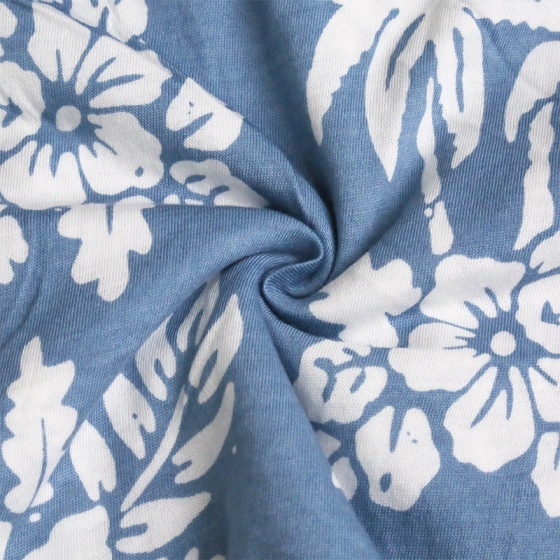Crafting Unique Patterns: The Art of Digital Printed Fabric
Aug 08,2025
Crafting Unique Patterns: The Art of Digital Printed Fabric
Table of Contents
- Introduction to Digital Printed Fabric
- What is Digital Printing in Textiles?
- Benefits of Digital Printed Fabric
- The Design Process: From Concept to Creation
- Techniques and Tools for Digital Fabric Printing
- Sustainability in Digital Fabric Printing
- Applications of Digital Printed Fabric in Various Industries
- The Future of Digital Printed Fabric: Trends and Innovations
- Conclusion
- FAQs about Digital Printed Fabric
Introduction to Digital Printed Fabric
The textile industry has been revolutionized by the advent of **digital printing**, enabling designers to create striking, intricate patterns that were once limited by traditional printing methods. With the capability to produce bespoke designs in short runs, digital printed fabrics have gained immense popularity. This article delves into the creative and technical aspects of **crafting unique patterns** using digital printing technology, showcasing its impact on design and production.
What is Digital Printing in Textiles?
Digital printing in textiles refers to the process of transferring digital designs onto fabric using inkjet technology. Unlike traditional printing methods, which often require screens or stencils, digital printing allows for direct application of designs. This not only enhances the detail and color vibrancy but also streamlines the production process.
###
The Process of Digital Fabric Printing
The process begins with a digital design created using sophisticated software tools. The design is then sent to a digital printer, which applies the ink directly onto the fabric. This allows for a multitude of colors and patterns to be printed in one go, offering an unparalleled level of customization.
###
Types of Digital Printing Techniques
There are primarily two types of digital printing techniques used in textiles:
1. **Direct-to-Fabric Printing (DTF)**: Ink is printed directly onto the fabric surface, allowing for high-resolution images and vibrant colors.
2. **Dye Sublimation**: This method uses heat to transfer dye onto materials like polyester, creating long-lasting, fade-resistant designs.
Benefits of Digital Printed Fabric
Digital printed fabrics offer numerous advantages over traditional printing methods.
###
Customization and Flexibility
One of the standout benefits is the ability to create personalized designs tailored to specific customer needs. This flexibility is particularly valuable for small businesses and designers who wish to experiment with limited runs or unique patterns.
###
Shorter Lead Times
Digital printing drastically reduces lead times since there are no screens to set up, and designs can be printed on-demand. This is especially beneficial for responding to trends or seasonal changes in the market.
###
Lower Waste Production
With digital printing, there is significantly less waste generated compared to traditional methods. Since designs can be printed in smaller quantities, the excess fabric and ink use are minimized, leading to a more sustainable production model.
The Design Process: From Concept to Creation
Creating unique patterns for digital printed fabric involves a multifaceted design process that combines creativity with technical skills.
###
Research and Inspiration
The initial stage typically involves research and gathering inspiration. This could include trends analysis, color palettes, and motif explorations. Designers often look to nature, art, or cultural influences to inspire their patterns.
###
Digital Design Tools
Modern designers utilize software like Adobe Illustrator and Photoshop to bring their ideas to life. These tools allow for precise control over color, texture, and layout, enabling the creation of intricate patterns that can be easily modified.
###
Prototyping and Testing
Before finalizing a design, it’s important to prototype and test the print on the desired fabric. This stage helps in evaluating the color accuracy, pattern placement, and overall fabric feel, ensuring the end product meets the designer's vision.
Techniques and Tools for Digital Fabric Printing
The advancement of technology has introduced various techniques and tools that enhance the digital fabric printing process.
###
Ink Types and Quality
The choice of ink is crucial when it comes to digital printing. Water-based inks are popular due to their eco-friendly nature, while pigment inks provide vibrant color outputs. The quality of ink directly influences the durability and vibrancy of the printed fabric.
###
Fabric Selection
Selecting the right fabric is essential for achieving the desired print effect. Fabrics such as cotton, polyester, and silk each react differently to digital printing, affecting the final outcome. Designers often choose fabrics based on the intended end-use, whether it be fashion, home decor, or industrial applications.
###
Printer Technology
Investing in high-quality digital printers is vital for achieving precise details and vibrant colors. **Wide-format printers** are commonly used in the industry, capable of handling large rolls of fabric, while **desktop models** are suited for smaller projects.
Sustainability in Digital Fabric Printing
As the textile industry faces increasing scrutiny over environmental impacts, digital printing has emerged as a more sustainable alternative.
###
Reduced Water Usage
Digital printing typically consumes less water than traditional dyeing methods, which require extensive rinsing and processing. This reduction in water usage contributes to the overall sustainability of the production process.
###
Eco-Friendly Inks
The development of eco-friendly inks, such as those made from natural materials, has further improved the sustainability of digital printing. These inks not only reduce harmful emissions but also offer biodegradable options for fabric production.
###
Local Production and Shorter Supply Chains
Digital printing enables local production, minimizing the need for long supply chains and reducing carbon footprints associated with transportation. This local approach supports the idea of “buying local” and fosters community economies.
Applications of Digital Printed Fabric in Various Industries
Digital printed fabric is versatile and can be utilized across numerous industries, each with its unique demands and applications.
###
Fashion and Apparel
In the fashion industry, designers leverage digital printing to create custom garments that stand out. The capability to print on various materials allows for innovative designs that cater to discerning consumers.
###
Home Décor
The home décor sector benefits from digital printed fabric in items like curtains, upholstery, and cushion covers. Unique patterns can transform living spaces, reflecting personal style and trends.
###
Industrial Applications
Beyond fashion and home décor, digital printed fabrics are also used in industrial applications, such as medical textiles, automotive upholstery, and even advertising banners. The ability to customize and produce short runs is particularly advantageous in these fields.
The Future of Digital Printed Fabric: Trends and Innovations
As technology continues to evolve, the future of digital printed fabric looks promising, with several trends poised to shape its trajectory.
###
Integration of AI and Machine Learning
The integration of AI and machine learning in the design process is expected to enhance creativity and efficiency. These technologies can analyze trends and consumer preferences, aiding designers in making informed decisions.
###
3D Fabric Printing
3D printing is also making strides in the textile realm. This innovative technology allows for the creation of complex structures and patterns that were previously unimaginable, opening new avenues for design and functionality.
###
Personalized Fashion and On-Demand Production
The demand for personalization in fashion continues to grow. Digital printing supports this trend by enabling on-demand production, allowing consumers to customize designs according to their tastes and preferences.
Conclusion
Digital printing has undeniably transformed the textile industry, offering endless possibilities for creativity and innovation. By enabling the crafting of **unique patterns**, it has empowered designers to explore new realms of artistic expression while promoting sustainability and efficiency. As technology advances, the future of digital printed fabric promises even more exciting developments, making it an essential element of modern textile design.
FAQs about Digital Printed Fabric
1. What types of fabrics can be used for digital printing?
Digital printing can be applied to a wide range of fabrics, including cotton, polyester, silk, and blends. The choice depends on the intended use and desired effects.
2. How does digital printing differ from traditional printing methods?
Digital printing allows direct application of designs onto fabric using inkjet technology, while traditional methods often require screens or stencils, limiting customization.
3. Are there eco-friendly options for digital printing?
Yes, many digital printing companies use eco-friendly inks and processes that reduce water usage and chemical waste, contributing to sustainable production.
4. Can I print my own designs on fabric digitally?
Absolutely! Many companies offer services that allow individuals to upload their designs for custom digital printing on a variety of fabrics.
5. What are the benefits of using digital printing in fashion design?
Digital printing offers customization, shorter lead times, and reduced waste, making it an ideal choice for modern fashion designers looking to innovate.
More Events
Crafting Unique Patterns: The Art of Digital Printed Fabric
Crafting Unique Patterns: The Art of Digital Printed Fabric Table of Contents Introduction to Digital Printed Fabric What is Digital Printing in Textiles? Benefits of Digital Printed Fabric The Design Process: From Concept to Creation Techniques and Tools for Digital Fabric Printing Sustainability in Digital Fabric Printing Applications of Digital Printed Fabric in Var
Aug 08,2025
Understanding Cotton Dyed Fabric: A Comprehensive Guide
Cotton dyed fabric plays a pivotal role in the textile industry, known for its versatility and comfort. The process of dyeing cotton involves several steps that transform plain cotton into vibrant and colorful materials, making it a popular choice for a wide range of applications, from clothing to home textiles. The dyeing process begins with the selection of high-quality cotton fibers. Cotton is
Aug 07,2025
The Environmental Benefits of Using Printed Cloth Fabric: A Sustainable Choice for a Greener Future
The Environmental Benefits of Using Printed Cloth Fabric Introduction In recent years, the textile industry has witnessed a significant shift towards sustainability. One of the most compelling options in this movement is **printed cloth fabric**. This versatile material not only meets the aesthetic needs of consumers but also offers a myriad of environmental benefits. In this article, we will delv
Aug 06,2025
Do Not Heasite To Contact W&S, Your Comprehensive Solution Provider Now!
We like produce phone cases but we more like to see you earn lots of money by working with us.
Quick Link
Garment
Copyright © Nantong Wang and sheng Textile Co., Ltd. All Right Reserved.

Whatsapp: 008613861954999
Looking forward to your call
Tel: 0086-513-80609999
Looking forward to your call
Email: Nick.wang@ntwangsheng.com
Looking forward to your letter





